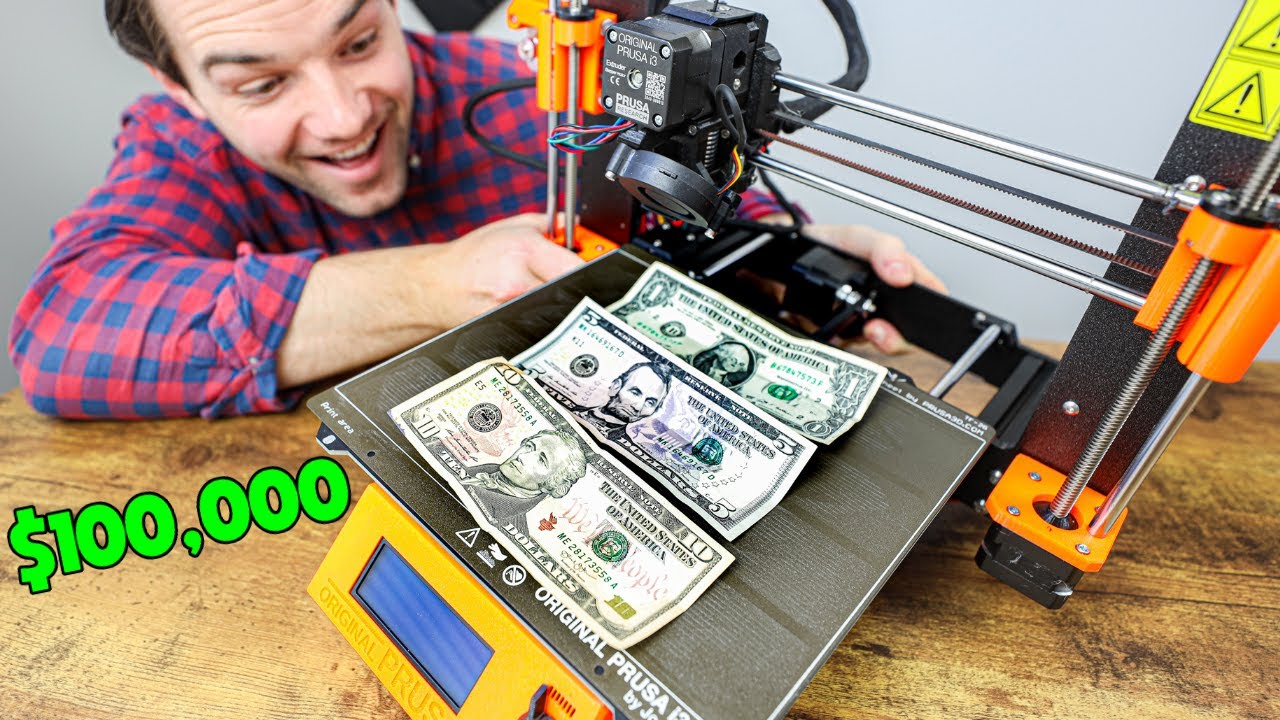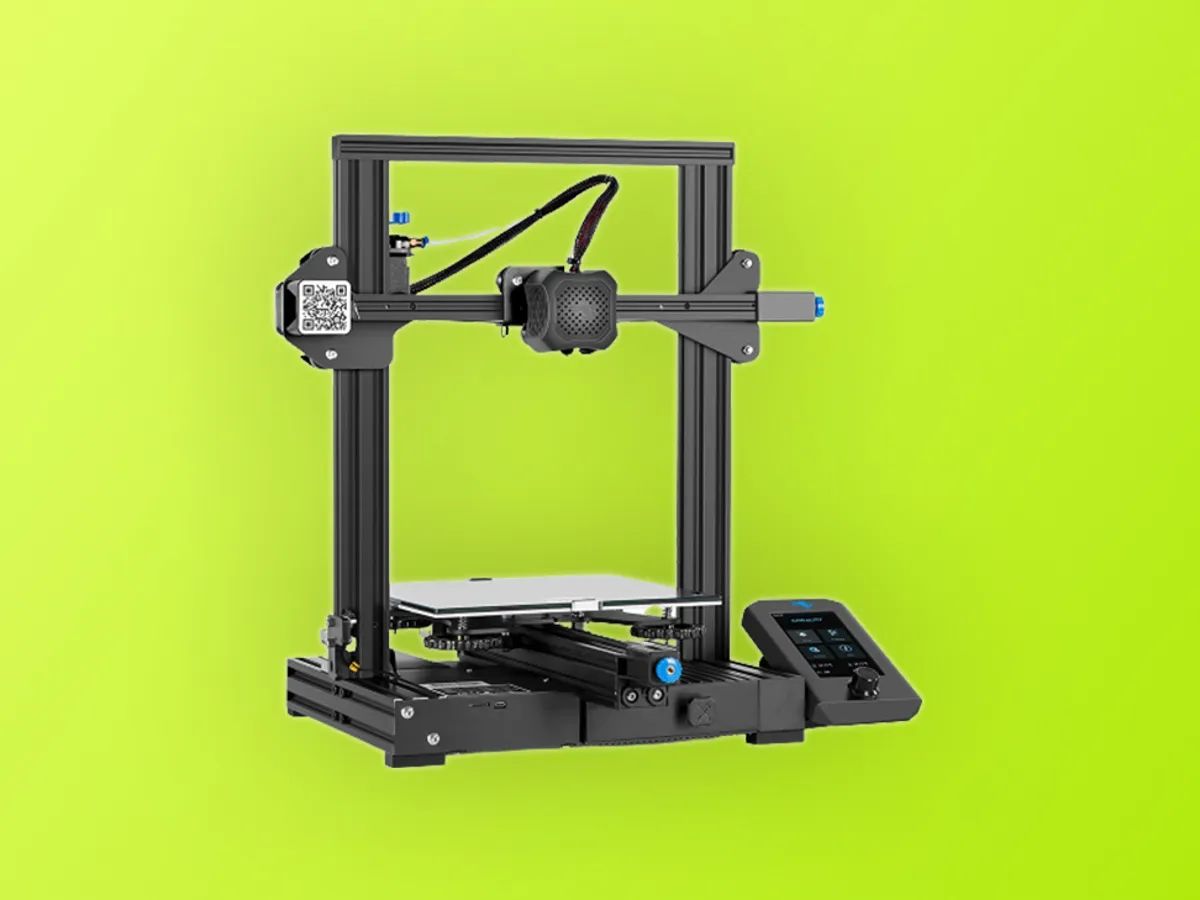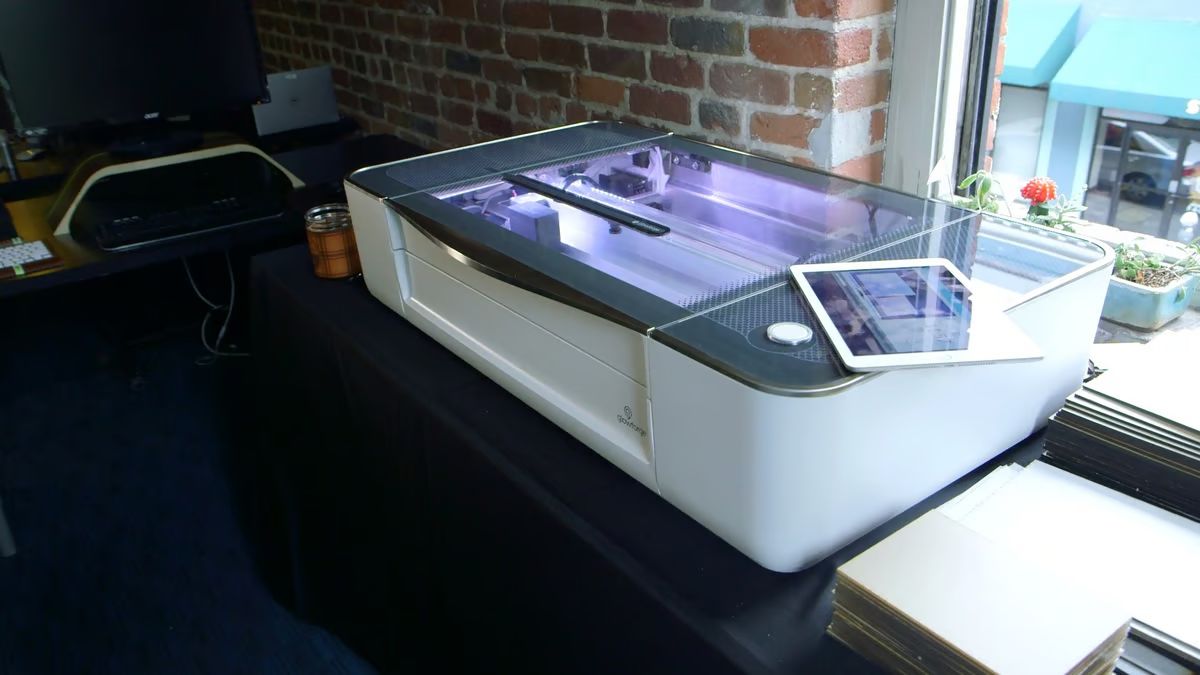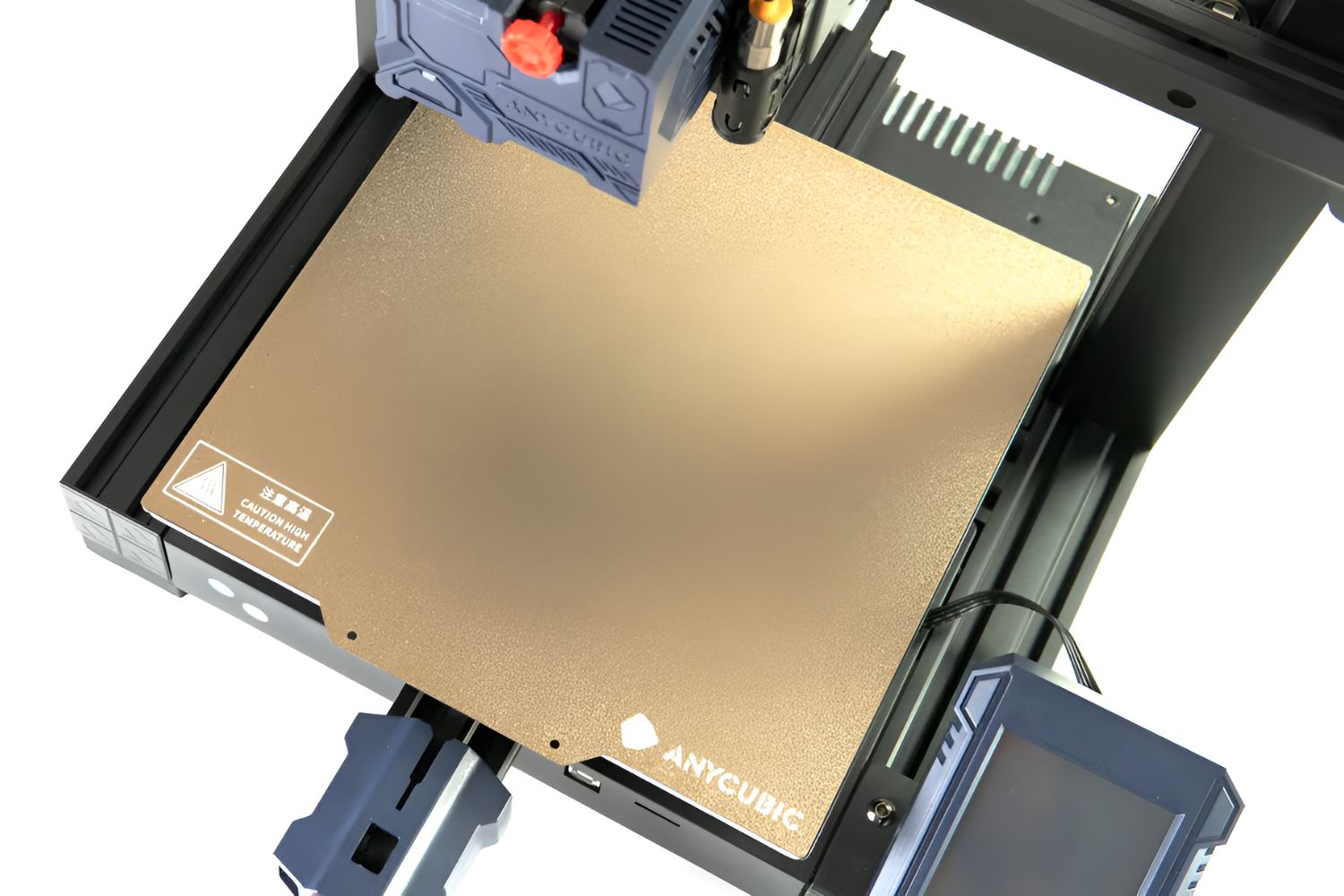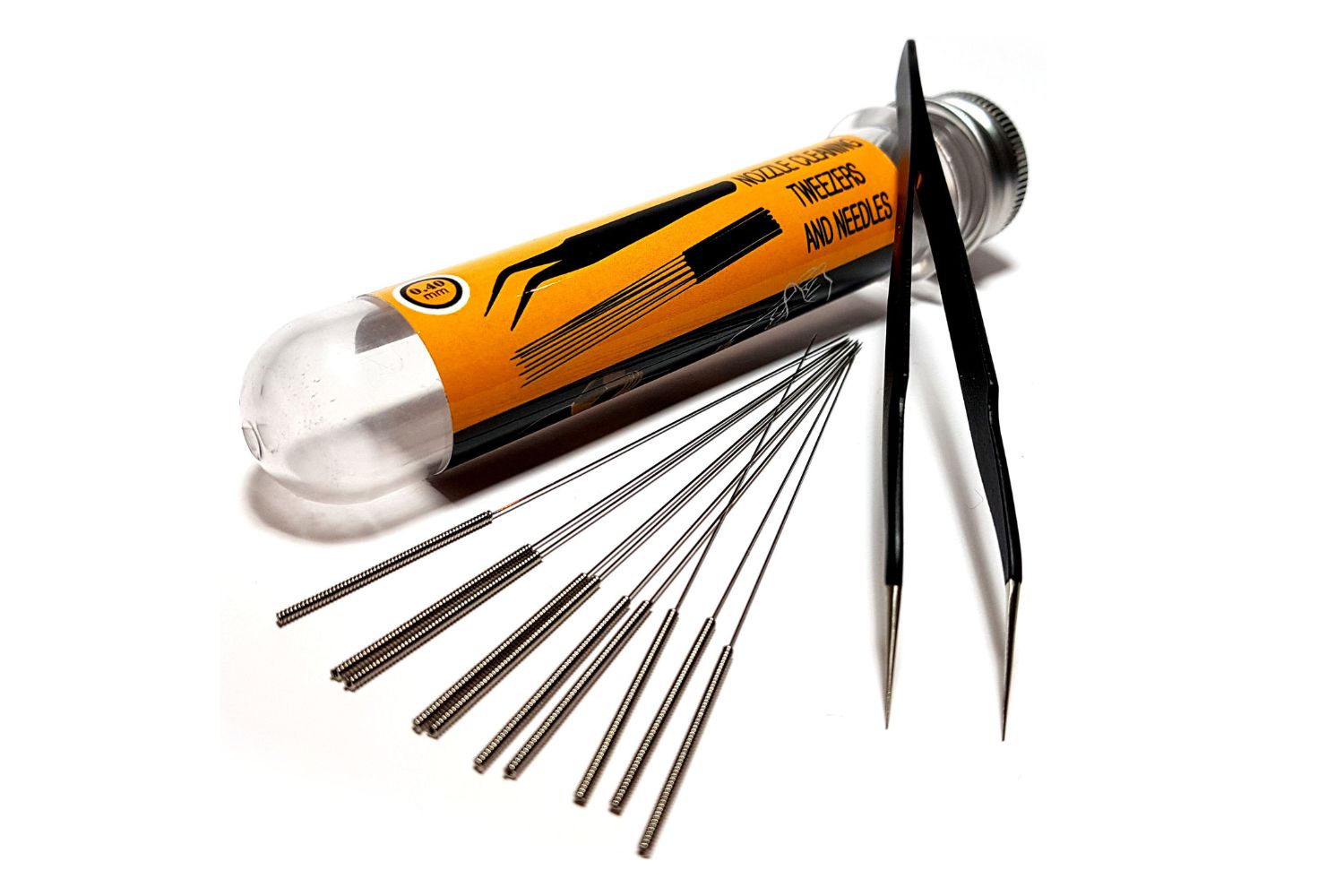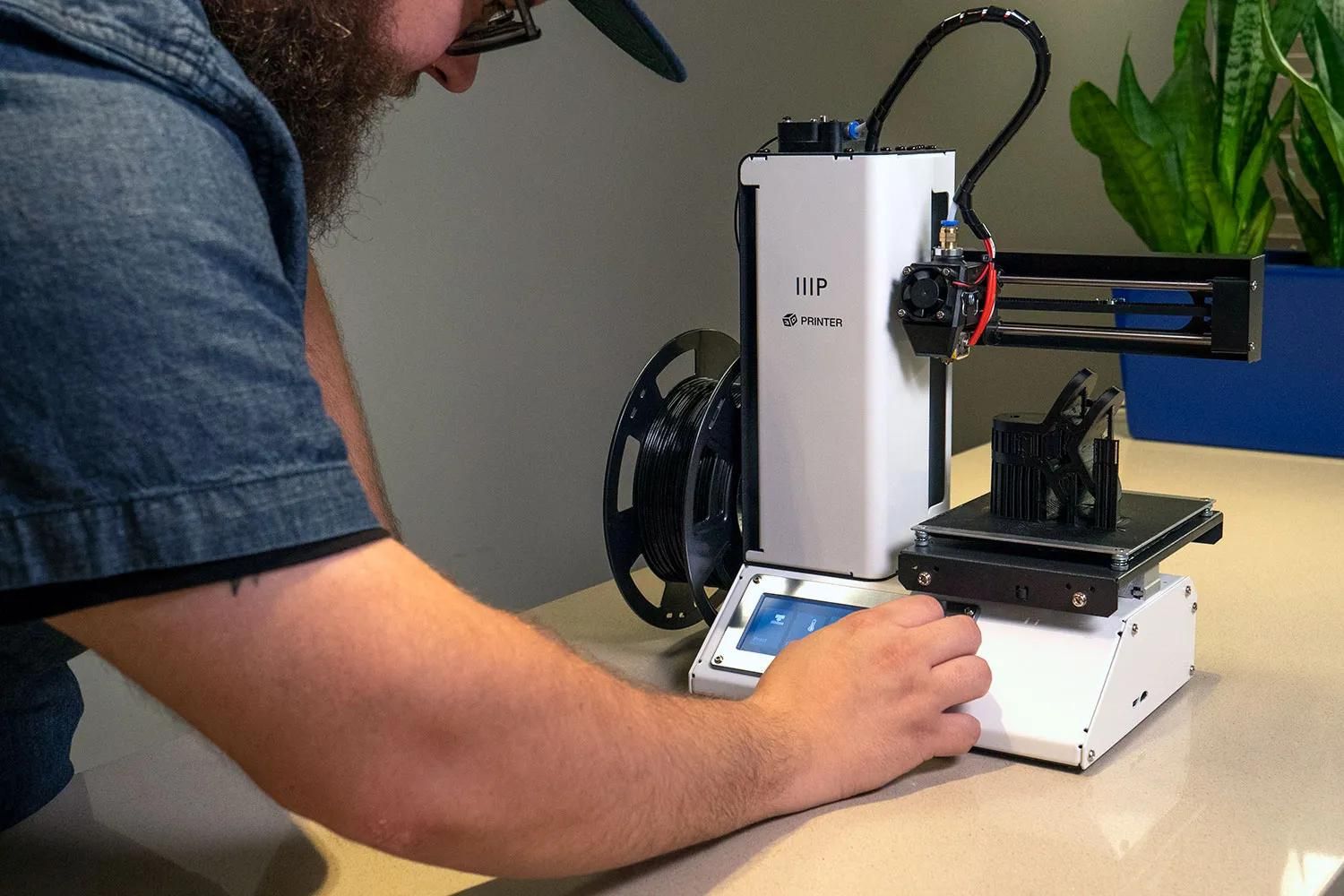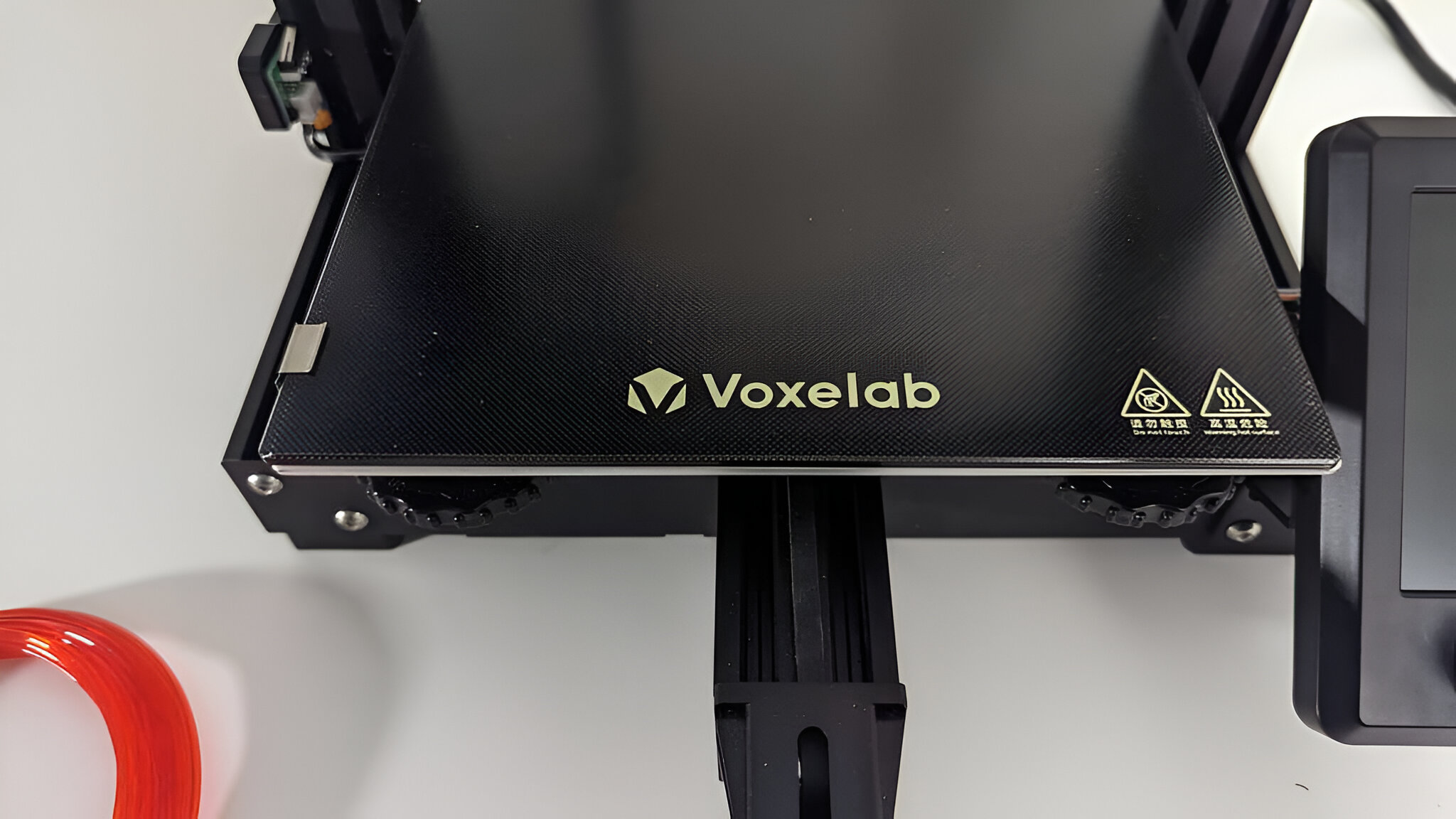Introduction
Welcome to the world of 3D printing, where imagination and technology merge to bring ideas to life. Over the past decade, 3D printing has evolved from a niche technology to a mainstream phenomenon, revolutionizing various industries and capturing the imagination of entrepreneurs and hobbyists alike. But what exactly is 3D printing, and how can it be leveraged to make money?
3D printing, also known as additive manufacturing, is the process of creating three-dimensional objects by layering material on top of each other. It allows for the production of complex shapes and intricate designs that would be difficult to achieve with traditional manufacturing methods. With the advancements in technology, 3D printers have become more accessible and affordable, empowering individuals to unleash their creativity and turn ideas into tangible products.
Now, you may be wondering how 3D printing can be a profitable endeavor. The answer lies in the countless opportunities it offers for entrepreneurial minds. Whether you are an artist, an engineer, or simply someone with a passion for creativity, there are multiple avenues to monetize your 3D printing skills and equipment.
In this article, we will explore different ways to make money with a 3D printer. We will delve into various business models and opportunities, providing insights and tips for success in the 3D printing industry. Whether you are considering starting a full-fledged 3D printing business or just looking for a side hustle, this guide will help you navigate the exciting world of 3D printing entrepreneurship.
So, if you’re ready to unlock the potential of your 3D printer and embark on a journey of creativity and profitability, let’s dive in and discover the possibilities awaiting you in the realm of 3D printing business.
What is 3D Printing?
At its core, 3D printing is a process that involves the creation of physical objects by adding material layer by layer. It is a form of additive manufacturing where a digital design is transformed into a tangible object. Unlike traditional manufacturing methods that involve subtracting material through cutting or molding, 3D printing builds objects by depositing material layer upon layer until the final product is achieved.
The process of 3D printing begins with a digital model of the desired object. This can be created using computer-aided design (CAD) software or obtained from online repositories of 3D printable files. The digital model is then sliced into multiple thin layers using slicing software, which determines the path and thickness of each layer. Each layer is then printed one by one, gradually forming the object.
3D printing offers a wide range of benefits, making it a versatile and powerful tool. One of the key advantages is the ability to create highly customized and complex shapes that are difficult or impossible to produce with traditional methods. This opens up new possibilities in various industries, such as aerospace, automotive, healthcare, and fashion, where intricate designs and precise specifications are required.
Moreover, 3D printing allows for rapid prototyping, enabling designers and engineers to quickly iterate and test their ideas. This saves time and money in the product development process, as physical prototypes can be created in a matter of hours or days instead of weeks or months. It also facilitates on-demand manufacturing, where products can be produced as needed, reducing the need for mass production and inventory storage.
While 3D printing was initially limited to industrial applications, advancements in technology have made it more accessible and affordable for individuals and small businesses. There are now a wide variety of consumer-grade 3D printers available in the market, ranging from entry-level models to professional-grade machines. These printers use different materials, including plastics, metals, ceramics, and even food, expanding the possibilities of what can be created.
Overall, 3D printing is a revolutionary technology that has the potential to reshape how we design, create, and manufacture objects. It empowers creativity, allows for personalized production, and holds immense opportunities for entrepreneurs and businesses looking to tap into its capabilities.
How Does a 3D Printer Work?
A 3D printer is a complex machine that brings digital models to life. Understanding how it works is essential to harness its potential for creating physical objects. Let’s go through the basic steps of the 3D printing process to gain insights into its inner workings.
The process begins with a digital design or model of the desired object. This can be created using specialized software or obtained from online repositories that offer a wide range of pre-designed 3D printable files. The design is crucial as it determines the shape and structure of the final product.
Once the digital model is ready, it needs to be converted into a format that the 3D printer can understand. This is done using slicing software, which takes the 3D model and breaks it down into thin horizontal layers. The slicing software also allows customization of parameters such as layer thickness, infill density, and support structures.
With the sliced model prepared, it’s time to load the chosen printing material into the 3D printer. The material can be in the form of filament, resin, powder, or even metal particles, depending on the type of printer. Most consumer-grade 3D printers use a filament, which is typically made of plastic (such as PLA or ABS). The filament is fed into the printer’s extruder, where it is melted and extruded through a nozzle.
Once the printer is loaded with the material, the 3D printing process begins. The printer’s gantry, which holds the extruder and nozzle, moves along the three axes (X, Y, and Z) according to the instructions from the sliced model. The nozzle deposits the melted filament onto the build plate or previous layers, following the precise path defined by the model.
Layer by layer, the 3D printer continues to deposit the material until the object is complete. This layering process results in the gradual buildup of the final object. Some 3D printers use additional technologies, such as UV curing for resin or laser sintering for powdered materials, to achieve different printing results.
Once the printing is finished, the object may need further processing or post-processing. This can include removing support structures, sanding, painting, or applying other finishing touches to achieve the desired look and quality.
It’s important to note that the 3D printing process can vary depending on the type of printer and materials used. Advanced 3D printers may incorporate multiple extruders, enabling the printing of objects with multiple colors or materials. Additionally, some printers can even combine different printing technologies, such as fused deposition modeling (FDM) and stereolithography (SLA), to achieve more complex and detailed results.
By understanding the inner workings of a 3D printer, you can unleash your creativity and utilize its capabilities to bring your ideas to life. It’s an exciting technology with endless possibilities, limited only by your imagination.
Is 3D Printing Profitable?
When considering any business venture, it’s essential to assess its profitability. The same goes for 3D printing. So, is 3D printing a profitable venture? The answer is, it can be, but success depends on various factors.
One of the main considerations when determining the profitability of 3D printing is the cost of the equipment. While consumer-grade 3D printers have become more affordable over the years, they still require an initial investment. The cost of quality 3D printers can range from a few hundred dollars to several thousand, depending on the brand, features, and printing capabilities.
Another cost to factor in is the materials. Different types of printing materials come at different prices, and the cost can add up, especially if you plan to do large-scale production or work with specialized filaments. It’s crucial to calculate material costs per print and factor it into your pricing strategy to ensure profitability.
Additionally, there are operational costs to consider, such as electricity, maintenance, and replacement parts. While these costs may not be significant, they should be factored into your overall business plan to have a clearer picture of your profitability.
Furthermore, the profitability of 3D printing depends on the market demand for the products or services you offer. Conducting market research and identifying a niche or target audience can significantly impact your success. It’s important to assess whether there is a viable market for your 3D printed products or services and if people are willing to pay for them.
Another factor to consider is competition. Since 3D printing technology has become more accessible, more individuals and businesses have entered the market, offering similar products or services. It’s crucial to differentiate yourself by offering unique designs, customization options, or superior quality to attract customers and stand out from the competition.
Moreover, pricing your products or services appropriately is crucial for profitability. It’s essential to consider not only the costs associated with production but also factors such as market demand, perceived value, and competitive pricing. Setting the right price can ensure that you cover your costs while still offering a competitive advantage.
While there are various considerations and challenges, 3D printing can be profitable for those who approach it strategically. It offers opportunities for entrepreneurs to tap into niche markets, provide customized products, or offer specialized services such as prototyping or modeling.
It’s important to keep in mind that profitability may not come immediately. Building a successful 3D printing business takes time, effort, and a solid business plan. By continuously improving your skills, staying updated with technology advancements, networking with potential clients, and refining your marketing strategies, you can maximize the profitability of your 3D printing venture.
In the next section, we will explore different ways to make money with a 3D printer, providing you with insights and ideas to help you turn your 3D printing skills into a profitable venture.
Different Ways to Make Money with a 3D Printer
Now that we have established that 3D printing can be a profitable endeavor, let’s explore the various ways you can monetize your 3D printer. Whether you’re looking to start a full-fledged 3D printing business or seeking a side hustle, there are several opportunities to explore.
- Selling 3D Printed Products: One of the most straightforward ways to make money with a 3D printer is by selling 3D printed products. You can create and sell a variety of items, such as customized phone cases, jewelry, home decor, toys, or art pieces. Consider targeting specific niches or markets to differentiate yourself and attract customers.
- Start a 3D Printing Service: Many individuals and businesses do not own 3D printers but require 3D printing services for their projects. By starting a 3D printing service, you can offer your printing expertise to clients who need prototypes, architectural models, or specialized parts. This can be a lucrative business opportunity, especially in industries like engineering, architecture, and product design.
- Create Customized Products: Personalized products are in high demand, and 3D printing offers the perfect platform to create one-of-a-kind customized items. You can offer personalized figurines, keychains, or even custom-fit prosthetics. The ability to cater to individual preferences and specifications can give you a competitive edge in the market.
- Sell 3D Printed Designs: If you have a knack for designing innovative and unique 3D models, you can sell your designs online. There are platforms and marketplaces dedicated to selling 3D designs, where customers can purchase and print the models themselves. Focus on creating designs that address popular trends or cater to niche interests to attract buyers.
- Offer 3D Printing Workshops or Classes: Share your knowledge and expertise by offering 3D printing workshops or classes. Educate others about the intricacies of 3D printing, teach them how to operate printers, or guide them through the design process. This can be a promising venture, especially for educational institutions, hobbyists, or individuals looking to learn 3D printing skills.
- Create and Sell 3D Printing Accessories: 3D printing requires various accessories and tools, and you can capitalize on this demand by creating and selling 3D printing accessories. This can include filament holders, nozzle cleaners, build plate adhesives, or customized tools designed specifically for 3D printing enthusiasts. With the growing popularity of 3D printing, there is a market for accessories that enhance the printing experience.
- 3D Printing for Prototyping: Many industries rely on prototyping to test and refine their products before full-scale production. By offering 3D printing services for prototyping, you can assist businesses in bringing their ideas to life. This can be valuable for product designers, engineers, and manufacturers who need prototypes quickly and cost-effectively.
- 3D Scanning and Modeling Services: In addition to printing, you can provide 3D scanning and modeling services. This involves using 3D scanners to capture physical objects or people and creating digital models from the scans. These models can be used for various purposes like 3D printing, virtual reality, or animation. This service can cater to industries like architecture, entertainment, or heritage preservation.
These are just a few examples of how you can make money with a 3D printer. Remember to identify your target market, offer unique value propositions, and continuously explore new opportunities to stay ahead in the ever-evolving 3D printing industry.
Selling 3D Printed Products
Selling 3D printed products is one of the most direct ways to generate income with your 3D printer. With the growing popularity and accessibility of 3D printing technology, there is a wide range of products you can create and sell to a diverse customer base.
When selling 3D printed products, it’s essential to identify a target market or niche. By focusing on a specific audience, you can tailor your products to their needs and preferences, increasing your chances of success. Some popular niches in the 3D printing market include customized phone cases, fashion accessories, home decor items, miniature models, or even cosplay props.
Creating unique and eye-catching designs is crucial to stand out from the competition. Whether it’s intricate jewelry pieces, funky home decor, or functional gadgets, investing time and effort into designing appealing products can attract customers and generate sales. Customization options like color choices, engravings, or personalized messages can further enhance the value and appeal of your products.
In terms of marketing and selling your 3D printed products, several platforms can be used to reach potential customers. Online marketplaces such as Etsy, eBay, or Amazon Handmade are popular choices for selling handmade or customized goods. Creating your own e-commerce website or utilizing social media platforms to showcase and promote your products can also be effective strategies.
Pricing your 3D printed products is another critical aspect to consider. It’s important to factor in all your costs, including materials, labor, packaging, and shipping, while ensuring that the final price is competitive and attractive to customers. Conduct market research to understand the pricing trends in your niche and adjust your prices accordingly.
Customer satisfaction and quality assurance are vital in the business of selling 3D printed products. Ensure that your prints are of high quality, free from defects, and meet the expectations of your customers. Proper post-processing techniques, such as sanding, painting, or finishing, can significantly enhance the overall quality and aesthetics of your products.
Additionally, excellent customer service and timely delivery are crucial for building a positive reputation and fostering repeat business. Promptly address customer inquiries and provide clear communication throughout the purchasing process to create a positive buying experience.
Selling 3D printed products can be a profitable venture if executed thoughtfully. Stay updated with the latest trends, continuously iterate and improve your product offerings, and listen to customer feedback to stay ahead of the competition and meet the demands of your target market.
Start a 3D Printing Service
If you have a knack for 3D printing and a passion for helping others bring their ideas to life, starting a 3D printing service can be a lucrative business opportunity. Many individuals and businesses require access to 3D printers but may not have the resources or expertise to operate them effectively.
As a 3D printing service provider, you can offer your expertise and equipment to clients who need prototypes, specialized parts, or custom-designed objects. This can include industries such as engineering, architecture, product design, healthcare, or even the arts and entertainment industry.
To start a successful 3D printing service, it’s crucial to invest in high-quality printers that can handle a variety of materials and offer excellent print quality. This ensures that you can meet the diverse needs of your clients and deliver the desired results. As your business grows, consider scaling up your equipment or diversifying your printing capabilities to serve a broader range of clients.
Establishing a strong online presence is essential for attracting clients to your 3D printing service. Create a professional website that showcases your expertise, services offered, and previous projects. Utilize social media platforms and online directories to reach a wider audience and build credibility in the industry. Consider showcasing case studies or success stories to demonstrate the quality and versatility of your work.
Networking and building relationships within your target industries can also help boost your 3D printing service. Attend relevant industry events, join professional associations, and engage in online communities to connect with potential clients and collaborators. Actively seek partnerships with designers, engineers, or businesses that may require ongoing 3D printing services.
Another important aspect of running a 3D printing service is pricing your services competitively. Consider the cost of the materials, machine operational costs, labor, and the complexity of the printing project when determining your pricing structure. Research the market rates and consider offering package deals or volume discounts to attract more clients.
In addition to 3D printing, you can offer related services such as design assistance, file optimization, or post-processing options like smoothing, painting, or assembling. This can provide added value to your clients and differentiate your service from competitors.
Excellent customer service is crucial for customer satisfaction and repeat business. Communicate and collaborate closely with your clients throughout the project, providing regular updates and addressing any concerns promptly. Deliver projects on time and ensure the quality meets or exceeds expectations.
Starting a 3D printing service requires a combination of technical skills, business acumen, and a customer-centric approach. By offering reliable, high-quality services and building strong relationships with clients, your 3D printing service can flourish and become a go-to resource for those in need of 3D printing expertise.
Create Customized Products
One of the exciting aspects of 3D printing is the ability to create customized products tailored to individual preferences and needs. By offering personalized and unique items, you can tap into a market that values customized goods. Creating customized products with your 3D printer opens up a range of opportunities to generate income and stand out from the competition.
When it comes to offering customized products, the possibilities are virtually endless. You can create personalized jewelry, custom phone cases, home decor items with names or special messages, or even custom-fit prosthetics or orthotics. The key is to understand your target audience and develop products that cater to their specific desires.
Consider leveraging online platforms and marketplaces where customers can easily customize their orders. Develop a user-friendly interface that allows customers to choose colors, sizes, engravings, or other personalized features. Showcase examples and provide visual representations of how customers’ customizations will appear on the final product.
To ensure a seamless customization process, it can be beneficial to integrate a design preview tool or offer direct communication channels for customers to discuss their requirements. This personal touch and attention to detail will enhance customer satisfaction and increase the likelihood of repeat business and positive referrals.
When creating customized products, it’s crucial to maintain a high standard of quality. Pay attention to the durability, functionality, and aesthetics of the final printed item. Prototyping and testing your designs thoroughly will ensure that the customized products meet or exceed customer expectations.
Marketing your customized products is essential in attracting potential customers. Utilize social media platforms, online communities, and targeted advertising to reach your target audience. Collaborate with influencers or bloggers in relevant niches to showcase your unique offerings and build brand recognition in the market.
Consider offering sample kits or physical catalogs that showcase the range of customization options available. This tactile experience can help customers visualize the possibilities and encourage them to place orders for their personalized items.
Pricing customized products can be tricky, as the level of customization and the complexity of the design may affect the production costs. Conduct market research to understand the pricing dynamics in your niche and calculate your costs accordingly. Consider offering different price tiers based on the level of customization or additional features.
Remember, communication and exceptional customer service play a significant role in the success of your customized products business. Proactively engage with customers, address their queries promptly, and ensure that you provide regular updates on the progress of their orders.
With a commitment to creativity, quality, and outstanding customer experience, creating customized products with your 3D printer can be a rewarding opportunity to connect with customers on a personal level and carve out a unique niche in the market.
Sell 3D Printed Designs
If you possess strong design skills and a talent for creating captivating 3D models, selling your 3D printed designs can be a profitable venture. Many individuals and businesses are searching for unique and high-quality designs to bring their visions to life. By selling your designs, you can tap into this demand and generate income while leveraging the capabilities of your 3D printer.
When selling 3D printed designs, it’s important to focus on creating original and compelling designs that stand out from the competition. Consider identifying a niche market or targeting specific industries that align with your design expertise and interests. This can include areas such as jewelry, fashion accessories, home decor, or even specialized parts for industries like robotics or medical devices.
Online marketplaces dedicated to selling 3D designs, such as Shapeways or Cults3D, are great platforms to showcase and sell your creations. Creating a strong portfolio with high-quality images, detailed descriptions, and clear licensing terms will attract potential buyers and encourage them to purchase your designs.
Consider offering both exclusive and non-exclusive licenses for your designs. Exclusive licenses provide buyers with sole ownership rights, while non-exclusive licenses allow multiple buyers to purchase and use the design. By offering different licensing options, you can cater to various budgets and needs, expanding your customer base.
Regularly update your design portfolio with new and innovative designs to keep customers engaged and attract repeat business. Stay informed about emerging trends and industry demands to create designs that are in high demand. Research the market to understand the pricing range for similar designs and set competitive prices that reflect the value of your work.
Marketing is essential to attract buyers to your 3D printed designs. Utilize social media platforms, design blogs, and relevant online communities to promote your designs and engage with potential customers. Collaborate with influencers or industry experts to showcase your designs and expand your reach.
Collaborating with 3D printing studios or professionals who can produce and fulfill the orders on your behalf is another approach to scale your design business. You can focus on creating designs while partnering with others to handle the production and shipping aspects.
Ensure that your designs are optimized for 3D printing and provide clear instructions or guidelines for printing to guarantee the best results for your customers. It’s also important to promptly respond to customer inquiries, address any issues or concerns, and provide excellent customer service to maintain a positive reputation.
By leveraging your design talents and the capabilities of your 3D printer, selling 3D printed designs provides a fantastic opportunity to showcase your creativity, reach a global audience, and earn income from your digital creations.
Offer 3D Printing Workshops or Classes
Sharing your knowledge and expertise in 3D printing by offering workshops or classes can be a rewarding endeavor that not only generates income but also helps others learn and unlock their creativity. As 3D printing continues to gain popularity, there is a growing demand for individuals who want to learn the ins and outs of this technology.
When offering 3D printing workshops or classes, it’s important to establish your target audience. Consider whether you want to cater to beginners who are new to 3D printing or professionals seeking to expand their knowledge and skills. Tailor your workshops or classes accordingly to meet the needs of your specific audience.
Organize your workshops in a structured and informative manner. Introduce participants to the basics of 3D printing, including how it works, different printing technologies, and available materials. Demonstrate the process of setting up and operating a 3D printer, including slicer software and model preparation.
Hands-on experiences are crucial in helping participants gain practical skills. Offer opportunities for participants to design their own simple objects using CAD software or online design tools. Provide guidance and assistance as they navigate through the design process, ensuring they understand the design requirements for successful 3D printing.
Incorporate practical demonstrations where participants can witness the entire 3D printing process from start to finish. This can include preparing the printer, running a print job, and post-processing techniques such as removing support structures or surface finishing.
Encourage participants to ask questions, engage in discussions, and share their ideas and experiences. Foster a collaborative and interactive learning environment where participants can learn from each other and exchange valuable insights. This can lead to networking opportunities and potential collaborations within the 3D printing community.
Consider offering specialized workshops or advanced classes for participants who want to delve deeper into specific areas of 3D printing. This can include workshops on advanced design techniques, optimizing prints for specific materials, or exploring new emerging technologies within the 3D printing field.
Promote your workshops or classes through social media, community boards, or relevant online platforms. Provide clear information about the content, duration, and pricing of the workshops. Highlight testimonials or success stories from previous participants to build credibility and attract new attendees.
Ensure that you provide ongoing support and resources to workshop participants even after the workshops have concluded. This can include access to online resources, forums, or email support where participants can ask questions or seek guidance when they encounter challenges in their 3D printing journey.
Offering 3D printing workshops or classes not only allows you to share your passion and knowledge but also establishes yourself as an expert in the field. By providing valuable learning opportunities, you can inspire and empower others to explore the world of 3D printing and open doors to new creative possibilities.
Create and Sell 3D Printing Accessories
In addition to the 3D printed products themselves, there is a growing market for accessories that enhance the 3D printing experience. By creating and selling 3D printing accessories, you can tap into this demand and provide valuable tools and resources to fellow 3D printing enthusiasts.
When it comes to 3D printing accessories, there are various options to explore depending on your interests and expertise. Consider creating accessories that address common pain points or improve the efficiency of the 3D printing process. These can include filament holders, spool organizers, calibration tools, bed adhesion aids, or nozzle cleaning devices.
Design your accessories to be easy to use, durable, and compatible with the most popular 3D printer models in the market. Conduct thorough research to understand the needs and preferences of your target audience to ensure your accessories will be in demand.
Offer customization options for your accessories, such as different color choices or sizes, to cater to individual preferences. This adds a personal touch and allows customers to tailor the accessories to their specific needs or aesthetic preferences.
Consider offering accessory bundles or starter kits that include a collection of essential tools for 3D printing enthusiasts. These can be attractive options for beginners who want everything they need to get started in one convenient package.
Marketing your 3D printing accessories is essential to reach your target audience. Leverage social media platforms, online communities, and forums where 3D printing enthusiasts gather to showcase your products. Collaborate with influencers or industry experts to demonstrate the value and utility of your accessories through their content.
Create an engaging and user-friendly e-commerce website that showcases your 3D printing accessories and provides detailed product descriptions, images, and customer reviews. Utilize search engine optimization techniques to improve the visibility of your website in search engine results.
Establishing partnerships with 3D printer manufacturers or suppliers can also be beneficial. Connect with companies that sell 3D printers and propose collaborations to offer your accessories as add-on bundles or complementary products to their customer base. This can help expand your reach and tap into existing networks.
Ensure that your pricing is competitive and reflects the value of your accessories. Consider the cost of materials, manufacturing, and any additional processes required. Research the market to understand the pricing dynamics and establish a pricing structure that balances profitability with customer appeal.
Providing excellent customer service is crucial in building a loyal customer base. Promptly respond to customer inquiries, address any concerns or issues, and provide clear communication throughout the ordering and shipping process. By establishing a reputation for quality products and outstanding customer service, you can foster customer loyalty and generate repeat business.
Creating and selling 3D printing accessories allows you to tap into the growing ecosystem surrounding the 3D printing industry. By providing valuable tools and resources, you contribute to enhancing the overall 3D printing experience for enthusiasts worldwide.
3D Printing for Prototyping
3D printing has revolutionized the prototyping process across various industries. As a 3D printing entrepreneur, offering 3D printing services specifically for prototyping can be a lucrative business opportunity. Many businesses and inventors require prototypes to test and refine their ideas before moving on to full-scale production, and 3D printing offers a cost-effective and efficient solution.
When catering to the prototyping market, it’s crucial to have a deep understanding of different industries and their specific needs. This allows you to provide tailored solutions and optimize the prototyping process based on the customer’s requirements. Industries such as product design, engineering, architecture, and fashion are just a few examples of those that regularly rely on prototyping.
Position your 3D printing service as a fast and reliable solution for creating prototypes. Emphasize the advantages of 3D printing, such as the ability to produce complex geometries, iterate designs quickly, and reduce time to market compared to traditional prototyping methods.
Collaborate with clients closely during the prototyping process. Understand their objectives, offer design advice if needed, and provide regular updates on the progress of their prototypes. Emphasize the importance of testing and validation to ensure the prototype meets the desired specifications and functionality.
Utilize a range of materials suitable for prototyping, such as thermoplastics, resins, or even multi-material printing. This allows you to meet the diverse requirements of different industries and enable clients to evaluate the performance and characteristics of their designs accurately.
Invest in state-of-the-art 3D printers that offer high-resolution printing, accuracy, and a range of material compatibility. This ensures that you can deliver prototypes that meet the strict requirements of clients, providing them with confidence in the quality and precision of their prototypes.
Offer additional services such as post-processing techniques to enhance the appearance and functionality of the prototypes. This can include sanding, painting, or applying surface finishes to achieve the desired aesthetics. Value-added services like assembly or mechanical testing can provide comprehensive solutions to clients.
Develop a pricing structure that reflects the complexity of the prototypes, the material usage, and the time required for printing and post-processing. Consider offering different package options based on the level of precision, resolution, or turnaround time required by the client.
Marketing your prototyping services involves targeting specific industries and showcasing your expertise in producing accurate and high-quality prototypes. Establish partnerships or collaborations with designers or engineering firms to expand your network and reach potential clients. Attend industry events, conferences, or trade shows to showcase your capabilities and connect with potential customers.
By offering specialized 3D printing services for prototyping, you can provide businesses and inventors with a valuable tool for testing and refining their ideas. Position yourself as a trusted partner in the prototyping process, and you will cultivate long-term relationships and generate steady revenue in this growing market.
3D Scanning and Modeling Services
3D scanning and modeling is an essential part of the 3D printing process, enabling the transformation of physical objects or subjects into digital models. Offering 3D scanning and modeling services can open up a range of opportunities in various industries, including architecture, entertainment, heritage preservation, and product design.
As a provider of 3D scanning and modeling services, you will utilize specialized equipment to capture real-world objects or subjects and convert them into accurate and detailed digital models. This can involve using technologies such as laser scanning, photogrammetry, or structured light scanning.
Position your services as a valuable solution for clients who require precise 3D models for various purposes, such as 3D printing, virtual reality, animation, or reverse engineering. Outline the benefits of 3D scanning, such as capturing intricate details, measuring complex geometries, and preserving or recreating physical objects in digital form.
Invest in high-quality 3D scanning equipment and software that offers accurate measurements, high-resolution data capture, and efficient processing capabilities. Stay updated with advancements in scanning technologies to provide the latest and most reliable scanning solutions to your clients.
Collaborate closely with clients to understand their specific needs and objectives. Determine the level of detail, accuracy, and output format required for their project. Whether it’s scanning large architectural structures or capturing intricate artistic sculptures, tailoring your services to meet the unique requirements of each client is paramount.
Utilize advanced 3D modeling software to convert the scan data into digital models. This involves cleaning up the scan data, processing it to create a watertight mesh, and optimizing the model for specific applications. Ensure that the resulting digital models are of high quality, ready for use in various downstream processes.
Offer additional services such as mesh optimization, texture mapping, or CAD conversion to provide comprehensive solutions to your clients. This can include refining the scans, improving the mesh topology, or converting the models into industry-standard file formats compatible with software used in different industries.
Develop a transparent pricing structure based on factors such as the complexity of the scanned object, the level of detail required, and the time needed for post-processing and modeling. Consider offering different pricing options, such as per-project or per-hour rates, to accommodate a variety of client needs and budgets.
Marketing your 3D scanning and modeling services involves showcasing your expertise, providing case studies of successful projects, and demonstrating the value you bring to clients. Utilize before-and-after examples to highlight the accuracy and level of detail of your scan-to-model process.
Establish connections with professionals in relevant industries, such as architects, designers, or heritage conservationists, to promote your services. Attend industry events, conferences, or trade shows to network with potential clients and stay informed about the latest trends and advancements in 3D scanning and modeling.
By offering accurate and reliable 3D scanning and modeling services, you provide clients with a powerful tool for capturing real-world objects and subjects in the digital realm. Position yourself as a trusted partner in the digitalization process, and you will find opportunities to collaborate on exciting projects and contribute to the growing field of 3D imaging.
Common Mistakes to Avoid
While entering the world of 3D printing can be exciting and promising, it’s important to be aware of common pitfalls and mistakes that can hinder your success. Avoiding these mistakes can save you time, money, and frustration as you navigate the 3D printing industry.
- Poor Print Settings: One common mistake is not optimizing print settings for each print job. Failing to adjust parameters like layer height, printing speed, or support structures can lead to failed prints or lower print quality. Take the time to understand the impact of these settings on your specific print and optimize them accordingly.
- Inadequate Material Selection: Choosing the wrong filament or material for a specific print can result in subpar results. Different materials have different properties, such as strength, flexibility, or heat resistance. Make sure to research and select the appropriate material for each print project to achieve desired outcomes.
- Poor Bed Leveling and Adhesion: Ensuring proper bed leveling and adhesion is crucial for successful prints. Failing to level the print bed or neglecting to use adhesion aids like glue or tape can result in print failures or warping. Regularly check and calibrate your print bed to maintain optimal print surface alignment.
- Ignoring Filament Quality: Using low-quality or expired filament can lead to inconsistent print results. Inferior filament may contain impurities or have inconsistent diameter, which can affect print quality and clog the printer’s nozzle. Invest in high-quality filament from reputable suppliers to ensure consistent and reliable prints.
- Lack of Design Considerations: Designing for 3D printing requires taking into account specific factors like wall thickness, support structures, or material limitations. Neglecting these considerations can result in weak or flawed prints. Familiarize yourself with design guidelines for 3D printing and design your models with these in mind.
- Underestimating Print Time and Costs: 3D printing can be time-consuming, especially for complex or large-scale prints. Failing to factor in the time needed for printing, post-processing, and troubleshooting can lead to delays and missed deadlines. Additionally, not considering the costs of materials, utilities, or equipment maintenance can impact profitability. Keep careful track of print time and materials used to accurately calculate costs and schedule.
- Insufficient Testing and Calibration: Skipping the crucial step of testing and calibrating your 3D printer can lead to unpredictable results. Regularly perform calibration routines, test prints, and maintain proper maintenance procedures to ensure your printer is performing optimally.
- Overlooking Documentation and Communication: Failing to document your settings, processes, and troubleshooting procedures can make it difficult to reproduce successful prints or address issues when they arise. Take the time to document your workflows and troubleshooting steps. Additionally, effective communication with clients, suppliers, or collaborators is essential to ensure clear expectations and avoid misunderstandings.
Avoiding these common mistakes requires a combination of knowledge, attention to detail, and continuous learning. Embrace a mindset of continual improvement, learn from your mistakes, and stay updated with the latest advancements and best practices in the dynamic field of 3D printing.
Tips for Success in 3D Printing Business
To thrive in the competitive landscape of the 3D printing business, it’s important to have a solid foundation and a strategic approach. Here are some tips to help you achieve success in your 3D printing venture:
- Invest in quality equipment: Purchase reliable and high-quality 3D printers, filaments, and accessories. This ensures consistent and dependable results, enhances your reputation, and minimizes downtime due to equipment failures.
- Stay up to date with technology: Continuously educate yourself about the latest advancements in 3D printing technology, software, and materials. Embrace innovations that can improve your efficiency, print quality, and overall capabilities.
- Master your craft: Develop strong skills in areas such as 3D design, modeling, slicing, and post-processing. Sharpening your technical skills allows you to create high-quality prints and deliver superior results to your clients.
- Build a strong portfolio: Create a diverse portfolio that showcases your best work across different industries and applications. Demonstrate your versatility and expertise to attract potential clients and build credibility in the market.
- Establish a strong online presence: Develop a professional website and utilize social media platforms to showcase your work, engage with your audience, and attract potential customers. Actively participate in online communities and forums to network and learn from fellow 3D printing enthusiasts.
- Provide exceptional customer service: Strive to exceed customer expectations by delivering on time, communicating effectively, and addressing any concerns promptly. Positive customer experiences lead to repeat business and valuable referrals.
- Market your business strategically: Tailor your marketing efforts to reach your target audience. Collaborate with influencers, attend industry trade shows or conferences, and leverage digital marketing techniques to expand your reach and attract new clients.
- Offer competitive pricing: Research the market to ensure your pricing is competitive while also maintaining profitability. Consider offering bundled services or special promotions to attract customers and incentivize repeat business.
- Continuously learn and adapt: Keep learning about the latest trends, advancements, and emerging applications in the 3D printing industry. Adapt your business strategies and offerings accordingly to stay ahead of the curve and meet evolving customer demands.
- Network and collaborate: Cultivate relationships with fellow 3D printing professionals, designers, and businesses in complementary fields. Collaborations can lead to mutually beneficial opportunities, such as joint projects or referrals.
Remember, success in the 3D printing business takes time, dedication, and a commitment to continuous improvement. Stay passionate about the technology, foster creativity, and strive for excellence in all aspects of your business. Embrace challenges as opportunities for growth and always prioritize delivering value to your customers.
Conclusion
Entering the world of 3D printing offers immense potential for creativity, innovation, and entrepreneurial success. With the right approach, strategic planning, and attention to detail, you can harness the power of 3D printing to turn your passion into a profitable venture.
In this article, we explored various ways to make money with a 3D printer, including selling 3D printed products, starting a 3D printing service, creating customized products, selling 3D printed designs, offering 3D printing workshops or classes, creating and selling 3D printing accessories, providing prototyping services, and offering 3D scanning and modeling.
We discussed common mistakes to avoid, such as poor print settings, inadequate material selection, design oversights, and underestimating costs. We also provided tips for success, including investing in quality equipment, staying up to date with technology, mastering your craft, building a strong portfolio, establishing a strong online presence, and providing exceptional customer service.
Remember that success in the 3D printing business requires continuous learning, adaptability, market research, and a customer-centric approach. Embrace opportunities for growth, foster collaboration, and remain dedicated to delivering high-quality products and services.
Whether you’re embarking on a full-time venture or exploring 3D printing as a side hustle, the 3D printing industry offers a wealth of opportunities for growth and profitability. With passion, dedication, and a commitment to excellence, you can leverage the potentials of 3D printing to unlock your entrepreneurial potential and create remarkable products that captivate customers.
So, embrace the possibilities that 3D printing offers, seize the opportunities available, and embark on a journey that combines technology, creativity, and business acumen. Whether you’re printing objects, providing services, or offering expertise, the world of 3D printing is waiting for you to leave your mark.







